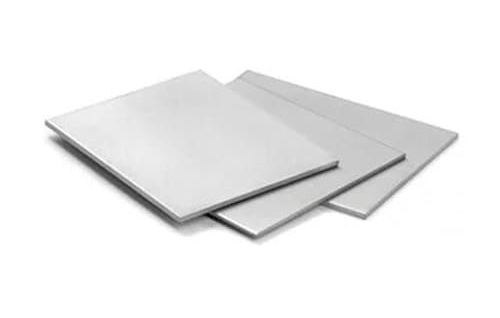Why 310 Stainless Steel Plates and Sheets Are Essential for High-Temperature
Applications
Date : Oct 28, 2024
Introduction
310 Stainless Steel is austenitic steel that holds balanced properties, due to which
it can be used in every sector where applications demand more of the "all-round"
nature of this kind of steel. It is broadly used in many industries due to its
excellent toughness and high-temperature resistance. In the present blog, we will
focus on the basic properties of 310 Stainless Steel Plates and Sheets and the
application verticals, with special mention of Artha Alloys as the leading supplier
in the concerned field.
What is 310 Stainless steel?
310, also known as S31000, is an austenitic stainless steel alloy that contains a
high percentage of chromium (24–26%) and nickel (19–22%). It is this composition
that makes Grade 310 such a difficult grade to work with, as it retains its hardness
without hardening up to around 1200 Removing the iron and reducing exposure provides
greater corrosion resistance but oxidizes easily under welding conditions.
Alloy 330 (UNS N08330) offers low thermal expansion properties, which makes it
suitable for use in the chemical and pharmaceutical industries as an inhibitor of
pyrite formation. In this way, 310 stainless steel is suitable for many industrial
applications where high-temperature treatment is required.

Properties of 310 stainless steel
310 stainless steel is a useful material in various industries due to its several key
properties, including:
- High-Temperature Resistance: 310 steel “takes” up to 1900°F
(1038°C) without losing its shape or corrosion resistance.
- Corrosion Resistance: The chromium content in 310 stainless
steel increases resistance to many types of corrosion, allowing the latter to
use sheets even in harsh environments.
- Strength and Ductility: 310 stainless steel has a happy ratio
of
room-temperature strength and ductility properties, which means this material is
workable and can be used for forming.
- Properties in terms of non-magnetic properties: Grade 310
stainless steel is nonmagnetic, and that itself is very crucial where the
equipment is related to generating magnetic fields.
Applications of 310 stainless steel plates and sheets
As it has been mentioned above, this grade of stainless steel demonstrates the
combination of various properties, so the fields of its application are wide. The
most common areas where 310 sheets and plates are applied include the following
ones:
- Chemical Processing: 310-grade steel is widespread in this
sphere for the production of heat exchangers, reactors, and containers because
of its resistance to corrosion and high-temperature resistance.
- Electricity Generation: The 310 steel in a power plant is
applied for
boiler tubes, superheater tubes, and reheater tube equipment working under high
temperatures and an aggressive environment.
- Aerospace and Automotive: used in making conveyor belts,
chutes, and hoppers used in food processing due to their non-magnetic features.
- Food Processing: The nature of 310 stainless steel, which is
non-reactive and resistant to corrosion, makes it ideal for food processing
equipment such as hoppers, chutes, and conveyor belts. While the bearing
capacities
to clean chemicals and high temperatures enable sterility in food production.
- Petrochemical Industry: 310 steel is used in this industry to
make heat exchangers, reactors, distillation columns, and other major equipment.
Advantages of 310 Stainless Steel Plates and Sheets
- Durability: This sort of plate and sheet is highly durable, and
it can withstand harsh mediums for a long time. It usually promotes a lesser
frequency of replacements of plates and sheets, hence cutting down the overall
cost of purchasing often.
- Low maintenance: It is resistant to corrosion; hence, this
particular characteristic of the 310 stainless steel alloy needs very little
maintenance, saving time and resources.
- Aesthetic Appeal: The clean, modern look and attractive aspect
of 310 stainless steel enrich the overall look and feel of the intended products
or applications.
- Recyclability: 310 stainless steel plates and sheets can be
recycled after serving their destined life, so these are a preferable option,
being an eco-friendly one.
Conclusion
Properties that 310 stainless steel plates and sheets possess include
high-temperature properties, corrosion resistance, strength, and ductility. These
make 310 stainless steel the material of choice in several industries: chemical
processing, power generation, aerospace, and food processing. With manufacturers
using 310 stainless steels, long-term life and reliability are assured, especially
considering the cost involved in maintenance and its effect on the environment.
